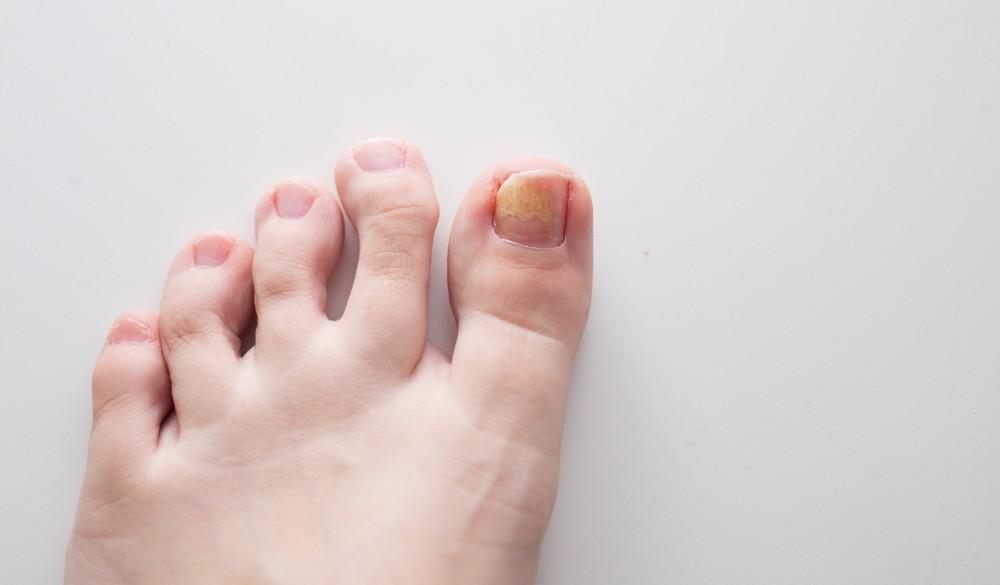Of all the places to get an infection, the toenail might seem like one of the most inconvenient and stubborn. If you’ve noticed a toenail becoming thick, discolored, or brittle, you might be dealing with toenail fungus, also known as onychomycosis. You’re not alone. This common condition affects millions of people, but the good news is that it’s treatable and preventable.
Let’s break down what it is, how to beat it, and how to keep your feet healthy for good.
What Causes Toenail Fungus?
Think of toenail fungus as an uninvited guest that loves warm, dark, and damp environments—exactly like the inside of your sweaty shoes. The main culprits are tiny organisms called dermatophytes, but yeasts and molds can also be to blame.
Here are the most common reasons this fungus decides to move in:
- Warm, Moist Environments: Frequently wearing tight, closed-toe shoes and sweaty socks creates a perfect breeding ground.
- Public Spaces Barefoot: Walking barefoot in communal areas like swimming pools, locker rooms, and public showers increases your risk of picking up the fungus.
- Minor Skin or Nail Injuries: A small cut next to your nail or even repeated pressure from running can create a tiny opening for the fungus to enter.
- Weakened Immune System: If your body’s defenses are down due to medication, illness, or other conditions, you’re more susceptible.
- Age: As we get older, reduced blood flow to the feet and slower-growing nails make us more vulnerable to infection.
How to Get Rid of Toenail Fungus for Good?
Getting rid of toenail fungus requires patience. Because the fungus lives underneath the nail, it can be tough to reach, and nails grow slowly. Consistency is your best friend here.
1. Medical Treatments (The Most Effective Route)
- Oral Antifungal Pills: Medications like terbinafine are often the most successful treatment. They work by promoting the growth of a new, healthy nail that slowly replaces the infected part. Treatment can last for several months and requires a doctor’s prescription, as these pills can have side effects (like potential liver issues) that need monitoring.
- Prescription-Strength Nail Polish: Your doctor might prescribe a medicated nail lacquer containing ciclopirox. You paint it on the infected nail and surrounding skin daily.
- Topical Creams: These are applied directly to the nail after filing the surface down. They are often used for milder cases or in combination with oral medications.
- Laser Treatment: A newer option where lasers are used to heat and destroy the fungus. It’s promising but can be expensive and isn’t always covered by insurance.
- Nail Removal: In severe, painful cases, a doctor may suggest removing the nail entirely so that a new one can grow back. This is a last-resort option.
2. Home Care and Lifestyle Adjustments
While home remedies are popular, they are rarely strong enough to cure an established infection on their own. However, they can be helpful as a supportive measure. Always talk to your doctor before trying them.
- Keep Nails Trimmed: Thin the nail down with a nail file to reduce pain and help topical treatments penetrate better. Use a separate file for the infected nail to avoid spreading the fungus.
Your Daily Foot Care Routine: A Step-by-Step Guide
Healthy feet are happy feet. Here’s a simple routine to follow:
1. Wash and Dry Thoroughly: Wash your feet with soap and water every day. This is non-negotiable. The most critical step is to dry them completely, paying close attention to the spaces between your toes.
2. Moisturize (But Not Between Toes): Use a good foot cream to keep the skin on your heels and soles hydrated. Avoid putting lotion between your toes, as the excess moisture can encourage fungus.
3. Trim Nails Properly: Cut your toenails straight across. Don’t round the corners, as this can lead to painful ingrown toenails.
4. Disinfect Your Tools: Clean your nail clippers and files with rubbing alcohol after each use. Disposable foot spa kits would be the best choice.
How to Prevent Toenail Fungus from Coming Back?
Once you’ve cleared the infection, prevention is key to keeping it away for good.
- Choose the Right Footwear: Wear moisture-wicking socks (think cotton or wool) and change them daily, or more often if your feet sweat a lot. Choose shoes made of breathable materials like leather.
- Protect Your Feet in Public: Always wear shower shoes, flip-flops, or waterproof sandals in public pools, gyms, and communal showers.
- Alternate Your Shoes: Don’t wear the same pair of shoes two days in a row. This gives them a full 24 hours to dry out completely.
- Disinfect Regularly: Periodically spray an antifungal powder or spray inside your shoes and wipe down your shower floor with a bleach-based cleaner.
Dealing with toenail fungus can be a test of patience, but it’s a battle you can win. Start by consulting a healthcare professional for an accurate diagnosis and a treatment plan that’s right for you. By combining medical treatment with diligent daily care, you can restore the health of your nails and step forward with confidence.


